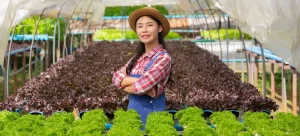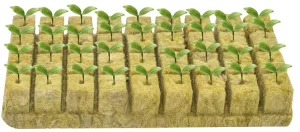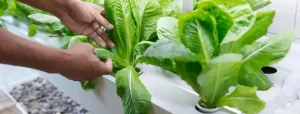Cheap Homemade Hydroponic System 2023

Table of Contents
You are looking for a good hydroponic system that is cost-effective, space-saving, has high-yields, easy to maintain, and provides you with healthier plants, well, you are thinking right and let’s dig deeper and learn how to achieve those results.
What is hydroponics
Hydroponics is a method of growing plants without soil, where the plants are grown in a nutrient-rich water solution instead. This technique allows for greater control over the plant’s environment, including the amount of nutrients, pH levels, and water uptake.
Hydroponics systems can be designed to be very efficient, using less water and fertilizer than traditional soil-based farming. It is used in a variety of applications, from large-scale commercial agriculture to small-scale home gardening, and is particularly useful in urban environments where space is limited.
Cheap Homemade Hydroponic System
If you’re interested in setting up a hydroponic system at home but don’t want to spend a lot of money, there are several low-cost options available. Here are some ideas for a cheap homemade hydroponic system:
- Deep Water Culture (DWC) system: DWC is one of the simplest and most affordable hydroponic systems you can make at home. All you need is a large container to hold the nutrient solution, an air pump, air stone, and net cups to hold the plants. This system is ideal for growing leafy greens, herbs, and small fruiting plants like cherry tomatoes.
- PVC NFT system: A Nutrient Film Technique (NFT) system involves a sloped channel that holds a thin film of nutrient solution in which the plants’ roots grow. PVC pipes can be cut to size to create a simple NFT system that is inexpensive to construct. This system is ideal for growing small, fast-growing plants like lettuce, basil, and spinach.
- Bucket drip system: A bucket drip system is another easy and low-cost hydroponic setup. All you need is a 5-gallon bucket, some net cups, and a drip irrigation system. This system is ideal for growing larger plants like tomatoes, cucumbers, and peppers.
- Vertical garden: You can create a vertical hydroponic garden by using a PVC pipe or a stack of buckets. Simply drill holes in the sides of the pipe or buckets and insert net cups to hold the plants. This system is ideal for growing a variety of plants in a small space.

What is the cheapest way to start hydroponics?
Starting a hydroponic garden can be an affordable and rewarding way to grow your own produce. Here are some of the cheapest ways to start hydroponics:
- Deep Water Culture (DWC) system: As mentioned earlier, the DWC system is one of the simplest and most affordable hydroponic systems. All you need is a large container, such as a plastic tote or bucket, an air pump, air stone, and net cups to hold the plants. You can purchase these items from a hardware store, and the cost can be as low as $20 to $30.
- Kratky method: The Kratky method is a passive hydroponic system that requires no electricity, pumps, or timers. This system is ideal for growing leafy greens, herbs, and small fruiting plants like cherry tomatoes. You can use a 5-gallon bucket or plastic container, and the cost can be as low as $10 to $20.
- Vertical garden: A vertical hydroponic garden can be made using PVC pipes, plastic bottles, or stackable planters. This system is ideal for growing a variety of plants in a small space. You can use recycled materials, and the cost can be as low as $20 to $30.
- DIY drip system: A DIY drip system can be made using recycled materials such as plastic bottles, tubing, and drippers. This system is ideal for growing larger plants like tomatoes, cucumbers, and peppers. You can purchase the necessary items from a hardware store, and the cost can be as low as $30 to $50.
By using recycled materials and shopping around for the best prices, you can keep the costs low and start growing your own produce at home.
How much do DIY hydroponic systems cost?
The cost of a DIY hydroponic system can vary depending on the size, materials used, and complexity of the system. In general, a basic system can cost as little as $50-$100, while larger and more advanced systems can cost several hundred dollars or more.
Here are some common components and their estimated costs for a DIY hydroponic system:
- Container: $5-$50 (depending on size and material)
- Growing media: $10-$50 (depending on type and quantity)
- Nutrient solution: $10-$30 (depending on brand and size)
- Pump: $20-$50
- Air stone: $5-$15
- Tubing: $5-$10
- Lighting: $20-$100 (depending on type and size)
Of course, these are just estimates and the actual cost can vary depending on where you purchase your materials and the specific design of your hydroponic system. Additionally, keep in mind that there may be ongoing costs for electricity, water, and replacement parts over time.
What is the easiest thing to grow hydroponically?
There are many plants that can be grown hydroponically with relative ease, but some of the easiest ones to start with include:
- Lettuce: Lettuce is a fast-growing plant that is relatively easy to cultivate in a hydroponic system. It prefers cooler temperatures and can be grown from seed or transplants.
- Herbs: Many herbs such as basil, mint, and cilantro are well-suited to hydroponic cultivation. They require little space and can be grown indoors or outdoors.
- Spinach: Spinach is a leafy green vegetable that can be grown in a hydroponic system. It is relatively easy to grow and can be harvested in as little as 30 days.
- Kale: Kale is a nutrient-dense leafy green that is easy to grow hydroponically. It grows quickly and can be harvested in as little as four to six weeks.
- Strawberries: Strawberries can be grown hydroponically and are well-suited to small-scale systems. They require a bit more attention than some other plants, but the reward is delicious fresh strawberries.
Remember, the key to success with hydroponic gardening is to start with a simple system and work your way up as you gain experience and knowledge.




